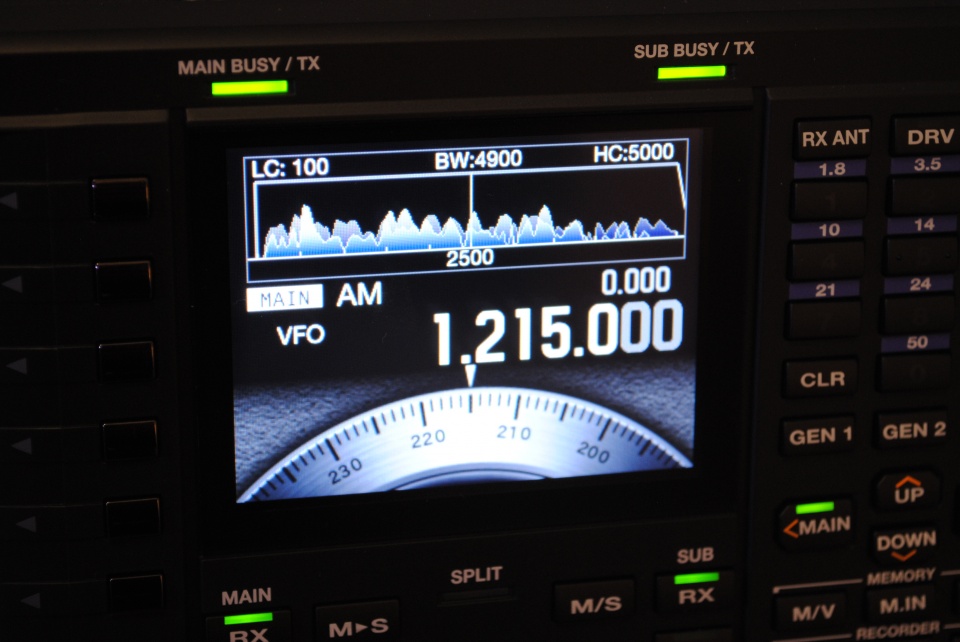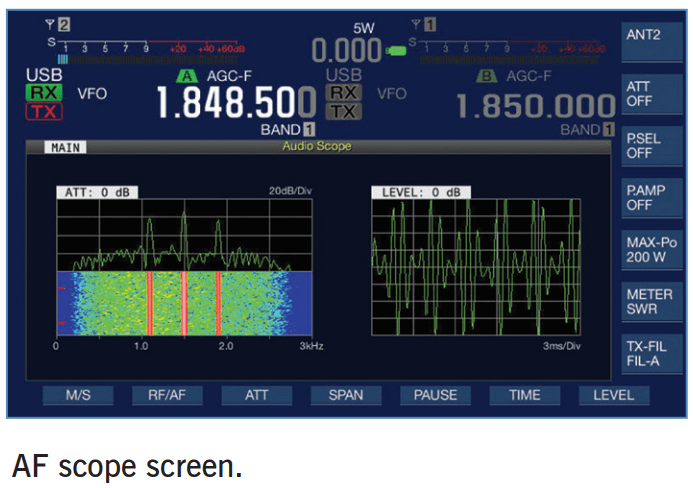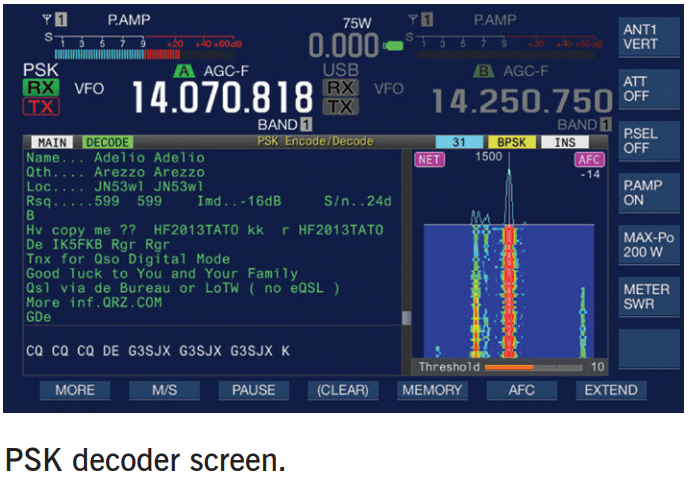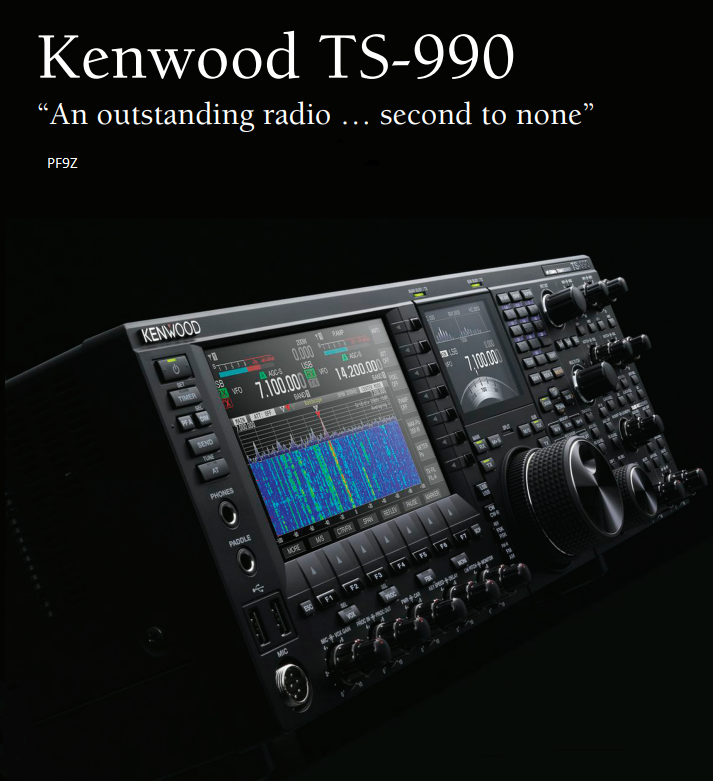
TRANSMIT FEATURES. The transmitter power output is variable on all modes down
to about 1W. The maximum power output can be set separately for each band in 1W
steps with different settings for data modes and tune power – very comprehensive.
Metering indicates power output, SWR, ALC, compression level, temperature or PA voltage
or current. The radio includes a built in auto ATU covering all bands from 1.8 to 50MHz
and will tune antennas with up to 3:1 VSWR. The ATU can be set to be in circuit on receive
as well as on transmit. On voice modes VOX, speech processor and
a transmission monitor are provided and the audio bandwidth may be tailored by adjusting
the low cut and high cut response. In addition an audio equaliser may be enabled that has
18 selectable profles similar to the receiver equaliser. On FM, receive and transmit tone
decoders and encoders are provided for CTCSS operation and repeater access and these can
use different frequencies.
On CW the rise and fall times of the keying envelope are settable from 1 to 6ms and there
is the usual provision for full and semi breakin with the drop back delay adjustable from
the front panel. An electronic keyer is built in and has various operating modes. It operates
over the speed range 4 – 60wpm, with the speed in wpm indicated on the display. The
weighting can be varied and made to increase or decrease with speed. Eight message stores
are also provided storing up to 50 characters each and can be programmed from the paddle,
the MULTI control or from a USB keyboard.
Automatically incrementing serial numbers are allowed and messages can be set to
repeat after a delay. The message stores are controlled from front panel keys.



RECEIVER FILTERS. The TS-990S is well equipped with channel filtering functions.
The IF channel bandwidth can be set over wide limits, down to 50Hz. On voice modes
the upper and lower passband edges are set independently (HI/LOW) and on CW and data
modes the centre frequency and width are set (SHIFT/WIDTH). SSB and SSB-DATA can use
either method. In addition to these settings, the overall shape can be set to sharp, medium or soft. On AM and FM modes the quoted bandwidth is somewhat misleading. On FM
it relates to the audio filtered bandwidth; theIF bandwidth is fixed. On AM it also relates to
the audio bandwidth after demodulation but the IF bandwidth is filtered to about double this value. The sub display shows the actual set values as well as a graphical overlay onthe audio spectrum.
The audio bandwidth can be set overall to narrow, medium or wide and, on CW,
an audio peak filter can be enabled. This has three selectable bandwidths 80, 160
or 320Hz and is tuneable across the pitch frequency. In FSK mode, a dual peak audio filter may also be selected. Last, but not least, an audio equaliser is incorporated with six preset profiles or three custom profiles, where each of the 18 channels can be independently adjusted. This is easy to set and graphically portrayed as one of the setup screens. Three separate sets of bandwidths for each
mode may be stored and toggled from a front panel key. This includes IF, AF and roofing filter settings. Separate keys are used for the two receivers.
Four different notch circuits are provided. Implemented at IF is a manual notch with adjustable centre frequency and wide/narrow setting. An IF auto-notch is available on SSB for automatically locating and attenuating a single interfering tone. A separate IF notch, termed Band Elimination Filter, is a manual notch with adjustable depth and stopband. Implemented at audio is a beat cancellation filter for voice modes, often called auto-notch on other radios. This automatically locates and removes multiple tones with two speedsettings, one setting is more effective on continuous beats and the other on intermittent tones.
Two separate DSP noise reduction functions are provided that use different algorithms and differ in their effectiveness depending on the prevailing situation.
Finally in the armoury for combating interference are two noise blankers. NB1 is a conventional IF gated analogue system and NB2 performs blanking using DSP. Quite a selection to choose from. Again, all functions are duplicated between the receivers, with separate controls.

